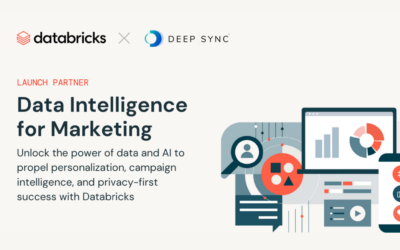Data is a powerful tool with near-limitless potential. But, to make your data work for you, you must refine your collection and analysis processes before you can generate valuable insights. In fact, data practitioners have asserted that 80% of their work involves acquiring and preparing the data.
But what happens if you don’t properly prepare your data? First, you’ll miss out on valuable insights without the right formatting and filtering in place. Then, over time, the data you collect will start to become siloed.
These data silos, or isolated divisions of data, can delay your decision-making and give way to redundant and inconsistent data that stalls your progress. If this describes your organization’s current state, don’t stress! In this guide, we will review four steps you can take to break down costly data silos and get your performance back on track.
1. Identify your pain points
Unfortunately, data silos are easier to spot after the fact, so the first step in developing a data silo prevention plan is to identify the breaking points.
Identify the systems or teams experiencing slowed progress and backtrack from there. For example, maybe a recent marketing campaign fell flat due to outdated or inaccurate consumer data. Or, perhaps customer complaints have been on the rise and your team lacks access to order history and resolution details.
Whatever the cause is, make a list of the “symptoms” and follow them back to your data. Common data issues organizations run into include:
- Data security or compliance concerns
- Limited data storage capacity
- Inaccurate or incomplete reports
- Redundant data sets
- Uninformed decision-making
- Customer experience issues
Gather feedback from your stakeholders to finalize your list and the associated technology or software systems. With their opinions in mind, you can move toward a more proactive data solution which may include updating software, enhancing cross-functional team collaboration, and performing regular audits.
2. Review your current processes
With your current pain points in mind, conduct a deep dive to discover how data travels through your internal teams and software systems. Look for ways your data can easily become trapped, inconsistent, or redundant to note both existing and potential bottlenecks. Get started by answering these questions:
- What are your primary data sources? This most likely includes a collection of client-provided data, third-party data, and data generated from campaigns. Specific digital marketing channels that generate data could include website analytics, social media interactions, and email marketing campaigns.
- What is your data’s intended end use? Start with your end goal in mind. For instance, maybe you’ll use customer insights, trends, and behaviors to improve customer service or use dashboards to forecast future trends based on historical data. Ensuring that your collected data aligns with your business goals will help you use all data strategically rather than take up unnecessary resources.
- How is your data collected? Perhaps you have structured data files within your CRM systems in addition to third-party data obtained from external partnerships. What APIs (applicant program interfaces) do you use across these systems? Are they standardized and scalable as your data load expands?
- Where is your data stored? Do you have a cloud-based data warehouse? Is it able to accommodate diverse data types and increasing volumes? Can you cleanse your data easily, or do you find it difficult to maintain data quality? Keep in mind your storage solution must be scalable, so if you’re starting to see silos appear, it’s best to take action before they stall your future progress.
Alongside these questions, consider how your team interacts with your technology—are there skills or knowledge gaps within your organization? This could mean you need to update your onboarding and training processes. Or, maybe your team believes that an investment in upgraded software or procuring data appends could resolve your current issues and fill in any gaps. Either way, take their perspective into account when auditing your systems.
3. Establish clear data governance policies
Data governance refers to a collection of standardized roles, policies, and metrics that your organization adheres to in order to ethically and effectively manage its data. A well-planned data governance framework covers strategic, tactical, and operational best practices that will ensure compliance and privacy.
Although specific individuals or teams may carry the most weight when it comes to data management, clear data governance is everyone’s responsibility. And, when upheld, it can help you avoid or overcome data silos. Create your policy by clearly defining the following data standards:
- Ownership. Define who owns what data based on each dataset and source, specifying which team or individual is responsible for management, accuracy, and compliance. For instance, your content marketing team may be responsible for all content performance-related data.
- Access and permissions. List who has access to view, modify, or share specific data and under what circumstances. Limit the access to authorized users and ensure data access requests are documented and approved across internal and external parties.
- Quality standards. Specify the level of accuracy, consistency, and timeliness expected from each data set. Note when data quality checks will be performed and how data discrepancies will be addressed.
Data governance policies promote responsible data management and resolve bottlenecks by encouraging transparency, consistency, and collaboration across the organization. Following these established protocols will keep your data clean and empower your team to steward its data effectively.
4. Invest in relevant solutions
Once you’ve done the internal work of identifying your pain points, mapping your data’s journey, and establishing clear governance expectations, it’s time to consider which solution works best for your organization. This might be a quick internal change or a full tech stack overhaul depending on your organization’s goals and needs.
To decide whether an in-house change or external solution makes more sense, consider which option will lead to a higher ROI. Arcadia’s analytics guide states that “this choice comes down to one paramount aspect — cost. It’s not straightforward either — you’ll spend money building from scratch, and you’ll certainly spend it contracting with vendors.”
Make sure you can justify your choice when considering your budget and team’s needs. Do the work ahead of time to ensure the solution you choose is best for your organization, both now and in the future.
Don’t let data silos threaten your progress. Take control of your data by assessing your pain points and proactively resolving them. Collaborate with your team to identify solutions that work for your organization and will launch you into improved performance.












0 Comments